Hopefully you’ve read the backstory about historic Nelson, BC and why we decided to pull together a self-guided walking tour. Now join us for the specifics. We’ve created a stop-by-stop guide for this historic walking tour. It connects stories of people in the past to what we see today. There is also a brief introduction to Nelson’s Memorial Park – where stories may end but the people are never forgotten.
Disclosure: This post contains affiliate links. If you purchase something from one of our affiliates, we receive a small commission at no extra charge to you. We appreciate your support!
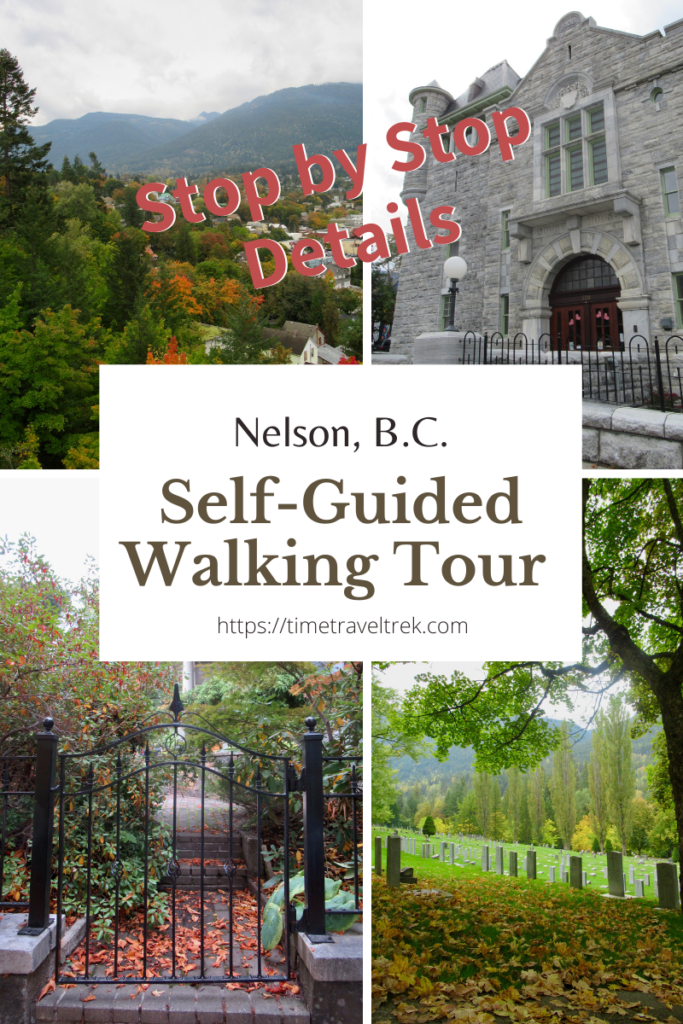
Table of Contents
Nelson, BC: Historic Walking Tour
Start at Nelson City Campground – the perfect base and place to park your small RV (or pitch a tent) within walking distance of downtown. Walking southwest along High Street from the campground, look across the road to see the stone retaining walls marking the original hospital location (now condos). Now head west down Vernon Street, pausing at the corner of Vernon and Ward for stops #1-3.
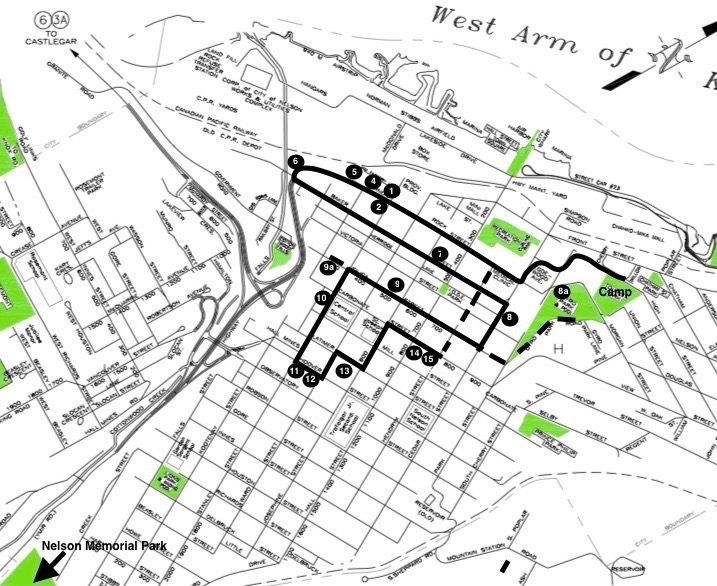
Stop #1 Court House
The ivy on Nelson’s Court House (320 Ward Street) was recently removed. Light grey marble blocks – cut from a quarry north of Kaslo – look as fresh and new as when they were set in place. Francis Rattenbury designed the building. He is the architect responsible for the B.C. Parliament Buildings and the Empress Hotel in Victoria. Alexander Carrie was his Clerk in the Works for the Nelson Court House.
Rattenbury was the architect but it was Carrie who was in charge of the quality and safety of work during construction. His role was to make sure that the building plans and specifications were followed correctly. According to the Walking Tour of Nelson’s Heritage Buildings, the Court House cost in the neighbourhood of $109,000 to build in 1909. One hundred and eleven years later, that would be around $3 million to complete. Thankfully, there’s no need to rebuild. Nelson’s Court House is still standing strong in its beautiful Beaux Art Chateau style.
Check out this post for creating your own self-guided tours!
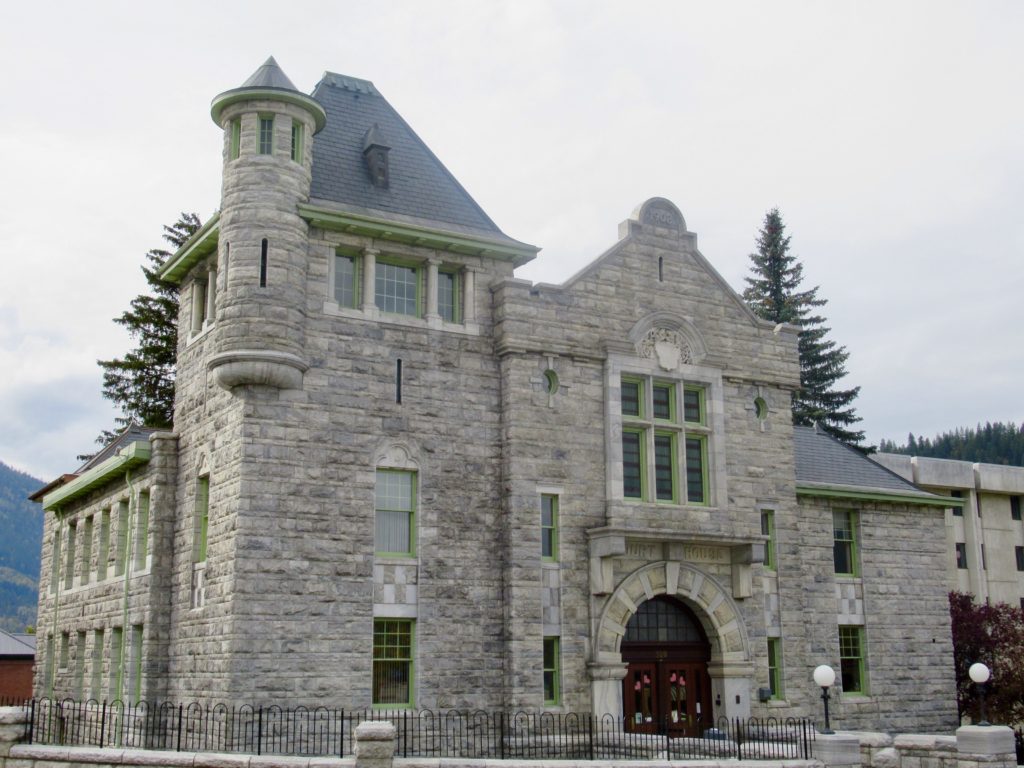
Stop #2 Hume Hotel
On the other corner stands the Hume Hotel (422 Vernon Street). J. Fred Hume was one of Nelson’s first storekeepers. He was also a partner in the Columbia & Kootenay Steam Navigation Company, founded in 1889. The company had ships throughout the Kootenays. In 1897, the Canadian Pacific Railway purchased the company for $200,000. With the sale of the shipping business, Hume was able to take his portion of the profit and invest in a high-end hotel at the height of Nelson’s mining years. The façade has been drastically altered since it was originally designed and construction supervised by A.C. Ewart and Alexander Carrie. Still, the Hume is still a longstanding local landmark. It’s also a great place for breakfast to fortify you through the tour stops ahead! Built in 1898, the Hume was the grandest hotel between Winnipeg and Vancouver. Step inside to view historic photos on the walls.
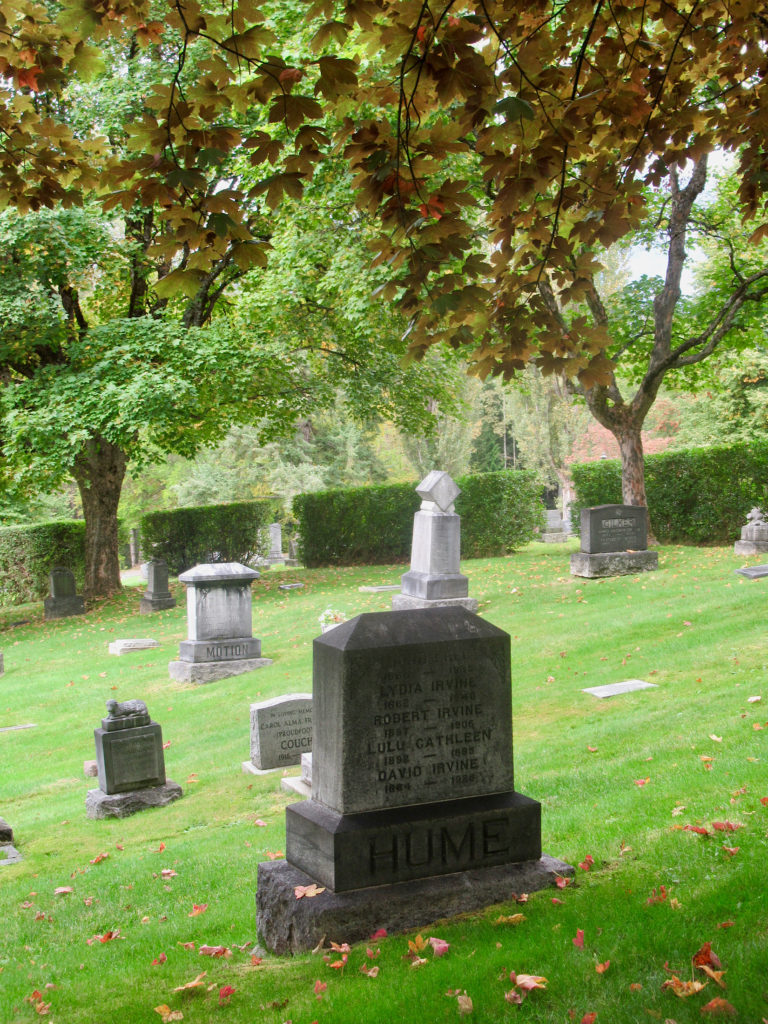
Stop #3 Houston Memorial
In the median between the Hume and the Court House is the oft-overlooked Houston Memorial. Built by the Kootenay Granite and Monument Company in 1916, it commemorates John Houston. The plaque reads: John Houston, born 1850, died 1910, first mayor of the City of Nelson, B.C., held office in the following years: 1897, 1898, 1900, 1903. Erected by his personal friends.
Continue along on our historic walking tour westward on Vernon Street just past the Courthouse fence for stops #4 & #5.
Stop #4 Land Registry Office
J. Fred Hume commissioned the Land Registry Office (403 Vernon Street) and Alexander Carrie designed the building in 1900. Note the fire-retardant building materials including the red bricks, metal shutters and green metal fire door. This metal door seals the main entrance. Land was a valuable commodity at the turn of the century and records obviously worth safekeeping. Continue walking westward along the sidewalk.
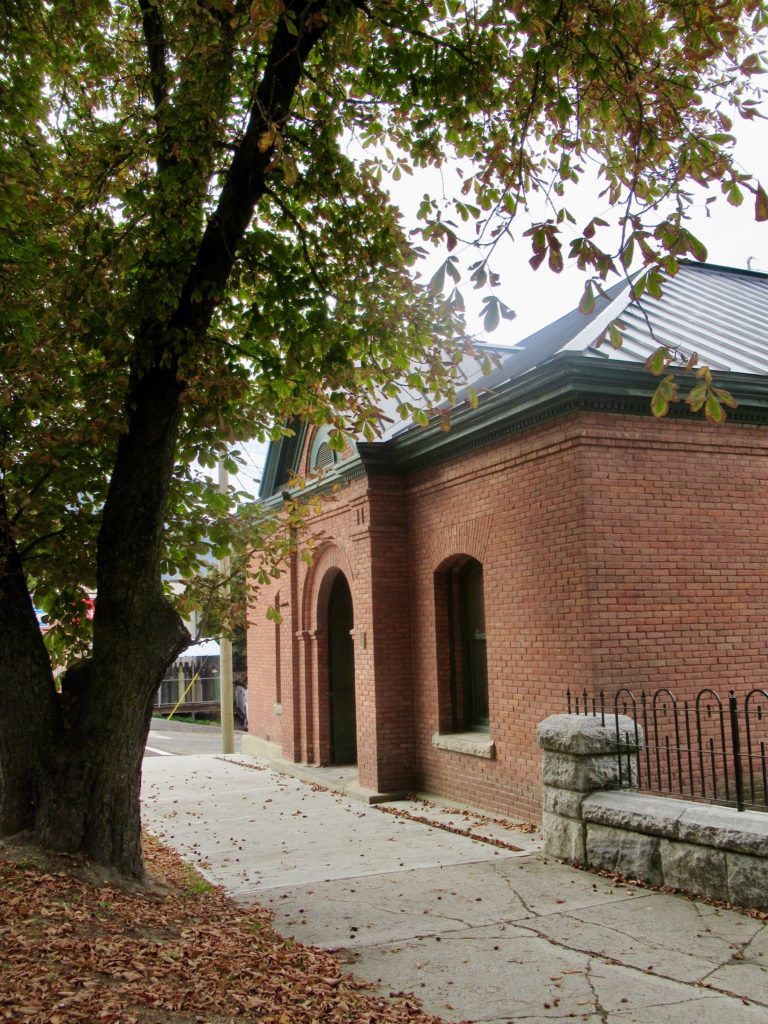
Stop #5 McDonald Jam Factory
The McDonald Jam Factory (305 Vernon Street) is a different Alexander Carrie project. It is subtle and unassuming from the street front, however the building is actually three storeys high as it steps down to the street below. Viewing from the side, it’s easier to see the 60-centimetre (2 feet) thick granite walls. The jam factory had easy access to the railway and shipping facilities on the lakefront. Built in 1911, the factory took advantage of local raspberry and strawberry crops. McDonald jams were shipped as far east as Winnipeg. Due to a variety of issues, the factory eventually closed in the early 1960s. Today, the building has a new life as a shared workspace.
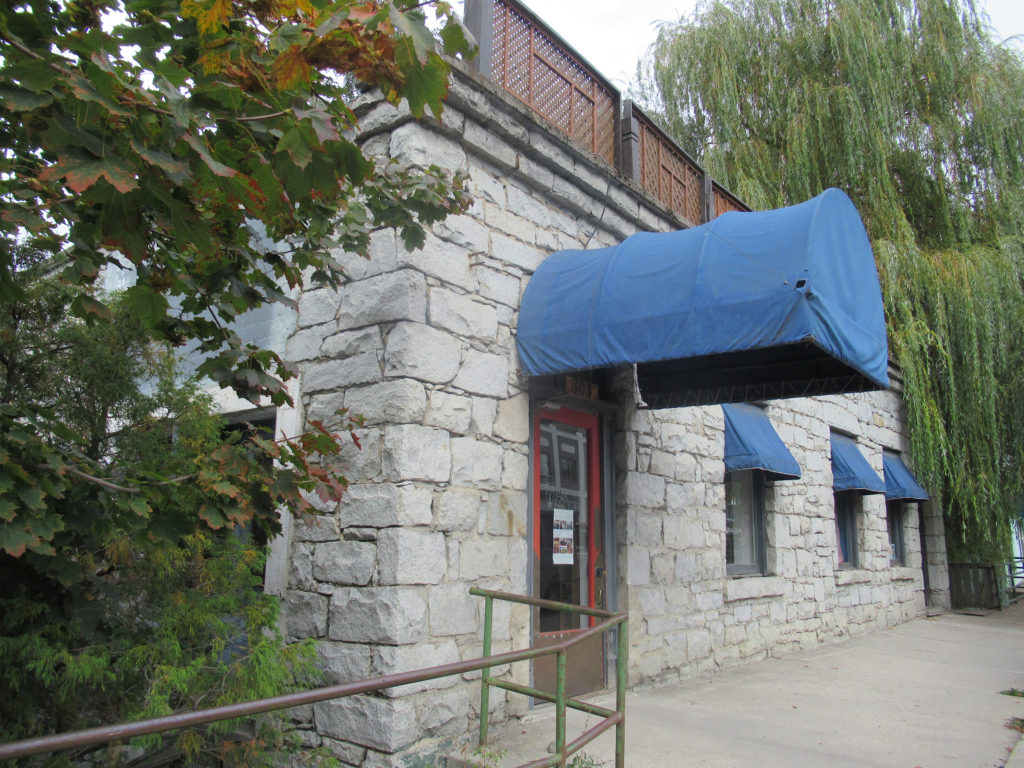
Cross over Vernon Street at Kootenay Street as the sidewalk ends on this side of the road. Continue walking along on Vernon Street to the corner for stop #6.
Stop #6 CPR Superintendent’s Residence
The classic Canadian Pacific Railway Superintendent’s residence (420 Railway Street) sits graceful and aloof among mature trees off the corner at the junction of Vernon, Railway and Baker Streets. It is one one Nelson’s Victorian classic designed in 1908 by Alexander Carrie. It makes me wonder what his own home looked like. If you know where the Carrie’s lived and/or have a link to a historic or current photo, please share in the comments. For now, turn left onto Baker Street and walk up the hill towards downtown and stop #7.
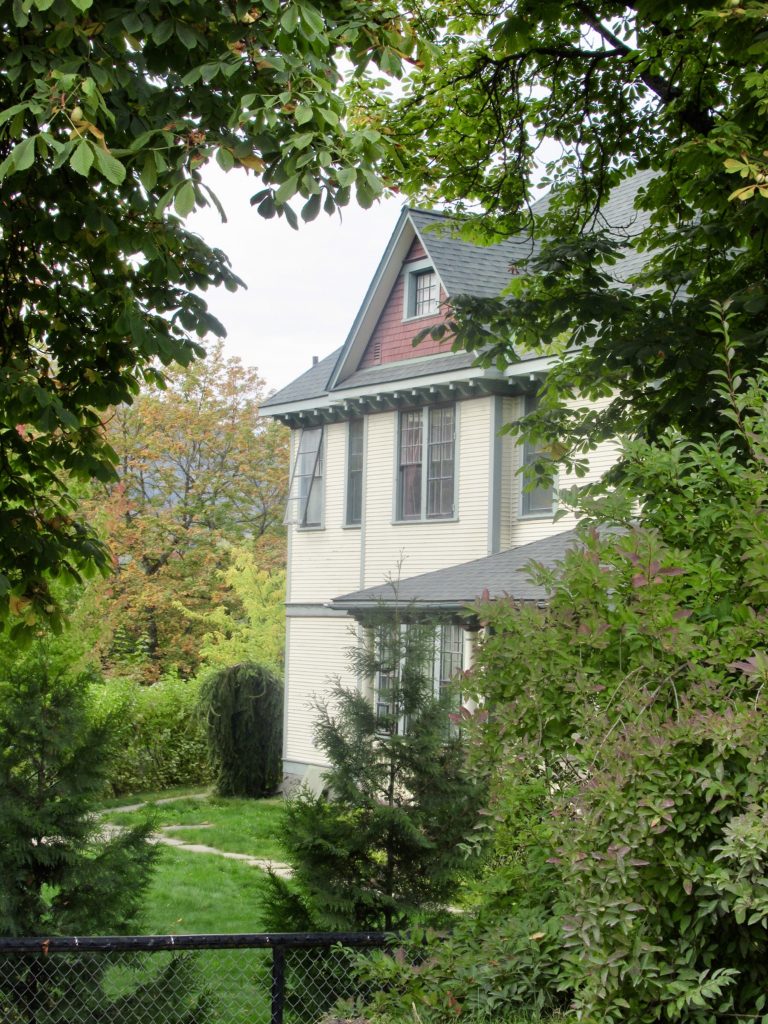
Stop #7 Houston Block
Rather repeat all of the excellent info found in the “Walking Tour of Nelson’s Heritage Buildings” you can follow their guide as you wander along the commercial district past historic bank fronts old furniture, hardware and grocery stores. Note the detail in the Victorian architecture – from turrets and bay windows to patterned brickwork and decorative cornices. Scan for names on the facades – Maglio, Burns, Houston.
Stop #7 on our tour is the connected to the stories we’re focusing on – this one being Houston’s Block (601-607 Baker Street). Architect Arthur E. Hodgins designed the building in 1898. Houston’s block housed the Imperial Bank as well as retail and office space. From local brick and marble to decorative arched entranceway and columns – the exterior of Houston’s block is pure class. According to the Kootenay History site, Houston claims to have spent $13,000 on the interior woodwork alone!
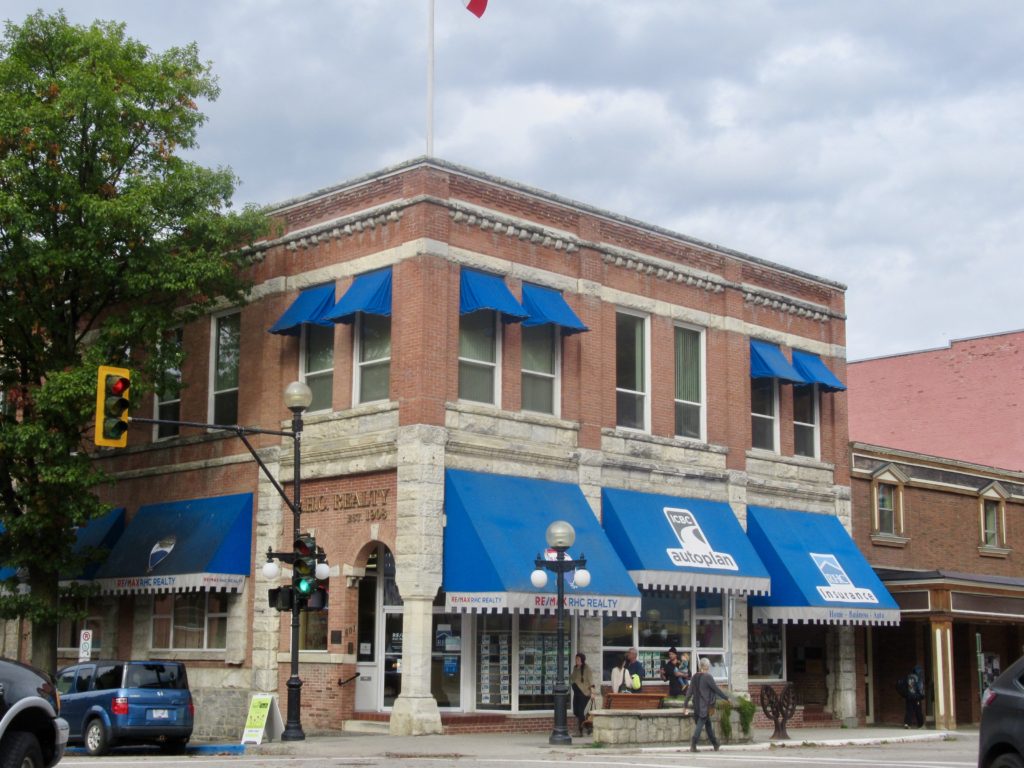
After you soaked up all the sights of Baker Street, keep walking in an easterly direction to Cedar Street. Head up Cedar to find the Judge’s domain.
Stop #8 Judge Forin’s Home
Judge John A. Forin’s stone and brick residence (519 Cedar Street) perches on a rocky bluff overlooking downtown Nelson. Today the property is heavily treed. You can catch a glimpse of its beauty between the maples using a zoom lens from the long driveway off of Cedar Street – remembering that it is private property.
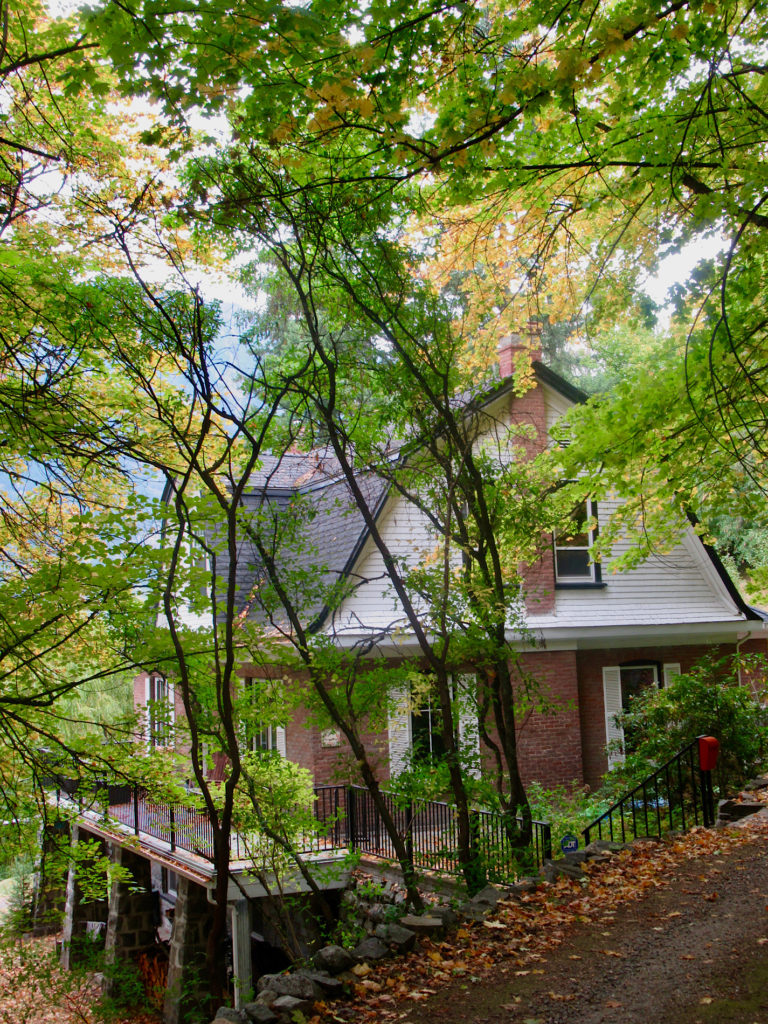
John Andrew Forin born in Belleville, Ontario on July 20, 1861. Forin was called to the Ontario bar in 1885. He served with the Queen’s Own Rifles during the Northwest Rebellion of 1885 and moved to British Columbia in 1890. In 1896, he and his wife Mary moved to Nelson. He was appointed County Court judge for the Kootenay/West Kootenay District.
The Forin’s hired architect Alexander C. Ewart to draw up the plans for their home. According to the Nelson Economist it cost $4500 to build in 1897. There was only one problem. Nelson was an active frontier mining town. The town’s brothels were located east of Ward Creek on Baker Street – almost right below the Judge’s new castle. Back then, the mature trees we see today didn’t exist. There was no barrier between the barrister and the brothels. Judge Forin began a campaign to have the red-light district moved. In 1899, the ladies of the night moved down the hill to West Lake Street.
Walk uphill to the Silica Street and follow it downhill.
Optional Stop #8a Gyro Park
If you’d like an excellent overview of the lower city turn left and continue up to Park Street first. Turn left on Park Street and walk along to the entrance of Gyro Park. The park was originally named Houston Park. The name changed in the 1920s in recognition of financial support from the Nelson Gyro Club. Take the paths to the lookout. Stand on high bluff for a panoramic view over the city and the West Arm of Kootenay Lake.
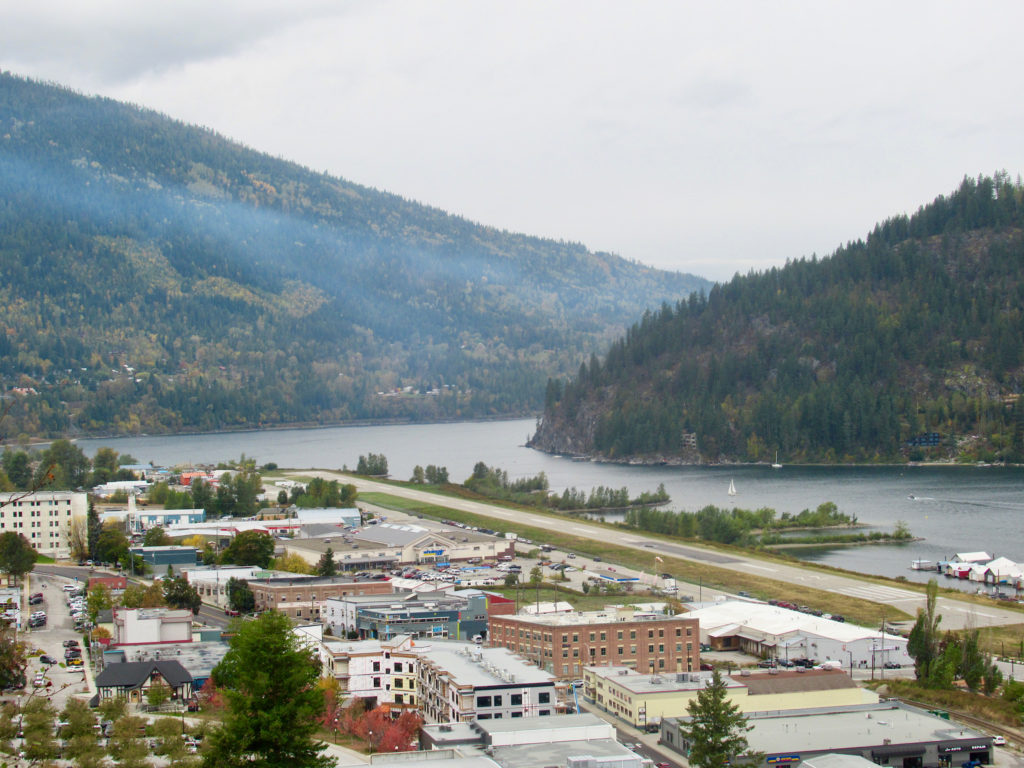
Return to Silica Street and continuing heading downhill.
Stop #9 Drs Arthur
As you continue along on our historic walking tour, you’ll see that there are countless interesting Victorian homes. Quite possibly the most interesting is the unassuming 2 ½ storey home numbered 515 Silica Street. This simple, wood-frame dwelling was built in 1890. The oldest remaining home in Nelson, it was designed by none other than Alexander Carrie. It was moved to Silica Street from its original location in 1909 to make way for the YMCA building – now the Royal Canadian Legion.
The most interesting part of this building is in its story. It was the home of Doctors Edward Charles and Isabella Arthur. The husband-and-wife team of physicians were key players in Nelson’s community.
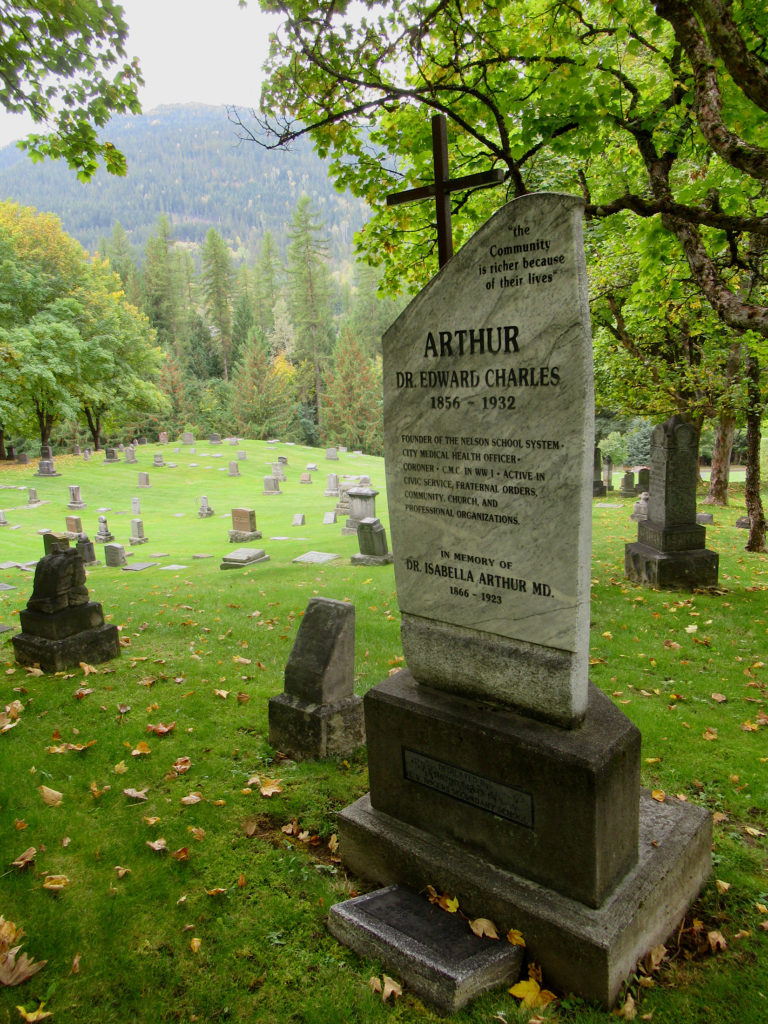
Life with the Arthurs
Edward graduated from Trinity College in 1888. He married Isabella in 1889 and went to work as a contract physician for the CPR. In 1890, Edward arrived in Nelson. This house was built for the Arthurs according to Patricia Rodgers blog When Walls Talk. They were expecting their first child. Sadly, Isabella lost the baby. She joined Edward in Nelson in 1891. A room in their home became the Nelson’s first school classroom. Reverend Thomas Rodgers held classes here until a proper schoolhouse was built later that year.
Did You Know? Dr. Isabella Arthur, was the City Health Officer when the community went through the Spanish Flu pandemic in 1918.
Source: City of Nelson Community Heritage Register Update June 2011
In 1893, Isabella Arthur entered medical school in Portland, Oregon. She graduated in 1897. Dr. Isabella Arthur became Nelson’s first female physician and the first School Medical Health Officer. Dr. Edward Charles Arthur became the district coroner, medical health office and school trustee. The couple lost a second child before they were blessed by the successful birth of Margaret in 1899. The house remained in the family until 1978. Now I wish I’d taken a picture of this unassuming yet storied home. If you have a picture of 515 Silica Street you’d like to share, please post it in the comments below.
Continue walking down Silica Street to Stanley Street. Turn left and walk uphill.
Optional Stop #9a Frank Fletcher’s House
Again we neglected to snap a picture on our own historic walking tour, but if you continue one block past Stanley Street you’ll see the beautiful 1897 home of Nelson’s third mayor, Frank Fletcher. The large 2 ½ storey late Victorian home (306 Silica Street) has a beautiful verandah. It’s the perfect place for entertaining and overlooks the large yard. Mayor Norman Stibbs bought the home in the 1930s and lived there until his death in 1972.
Ever heard of heritage trees? Neither had I until now. This property has a heritage apple tree. The ‘Coronation’ apple tree was gifted to Mayor Stibbs in 1953 in London by Queen Elizabeth II.
Return to Stanley Street and head uphill.
Stop #10 MacDonald’s Victorian
Across the street from the brick red Central School – designed by Alexander Carrie in 1909 – lies the home of lawyer William A. Macdonald. Constructed in 1899 for the estimated cost of $3500, this attractive home is in the Late Victorian style of architecture. If you know who the architect was – I couldn’t find the info online – drop a note in the comments below. Thanks!
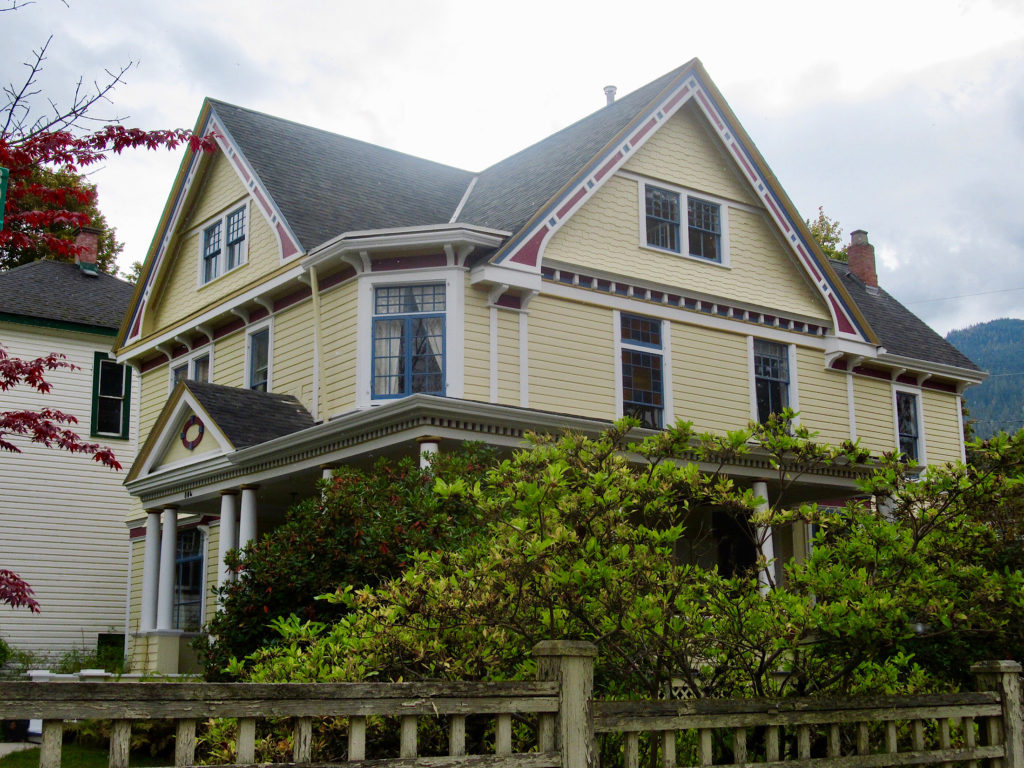
Keep walking uphill for a couple more blocks – hang in there, you can make it – and turn left onto Hoover Street.
Stops #11 & #12 A Bank Manager’s Abode
The large Late Victorian home at 418 Hoover Street was also built for a lawyer – Robert S. Lennie. However, this grand home was so grand that in 1964, the Bank of Montreal acquired the property. The Hoover Street Victorian became the bank manager’s residence replacing Hochelaga (stop #15 below).
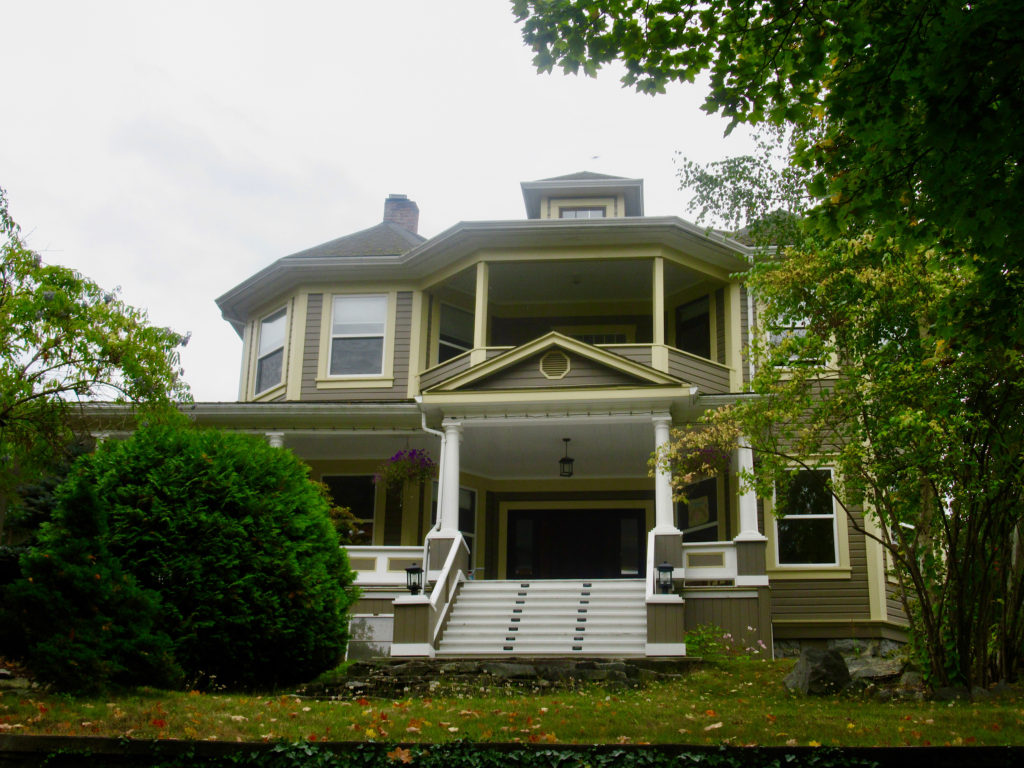
Almost next door (424 Hoover and Ward Streets) is the unique home built for J. Fred Hume in 1891. Tucked in the trees today, it’s hard to see most of the beauty of this Victorian Italianate structure. The Hume home had all of modern accoutrements and a spectacular view. However Lydia Hume was not overwhelmed. She complained that the house was too far out of town! Another owner, R.W. Dawson, replaced the original front verandah was replaced with a stylized sternwheeler pilothouse
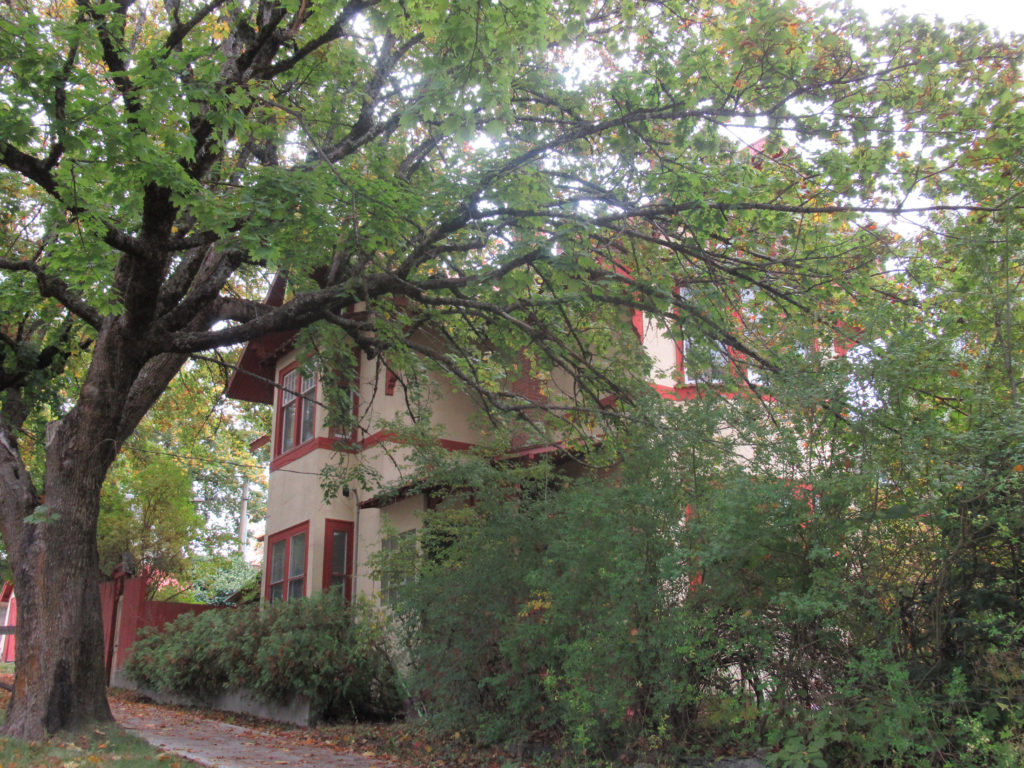
Head downhill on this historic walking tour to Ward Street for one block to Latimer Street. Turn right.
Stop #13 Nelson Brewery
The original Nelson Brewing & Ice Company (512 Latimer Street) was founded by Robert Riesterer. According to a writeup on page 15 in the “First History of Nelson BC” accessed via the Internet Archive, Robert Riesterer established “Riesterer’s Brewery” in 1893. However in 1897 he registered a change. As a result, it became the “Nelson Brewery.”
Riesterer was a German brewer who moved to British Columbia 25 years earlier. He worked at breweries in Victoria, New Westminster and Vancouver before coming to Nelson. The writeup claims that the Nelson brewery – although smaller – was on par with the best modern breweries of the east at the time. “It has its own ice manufacturing plant and modern refrigerating systems. It has a capacity of manufacturing five hundred gallons of lager beer per day… Mr. Riesterer takes personal charge of every brew made.”
The brewery doors were closed by the 1960s. Thirty years later Nelson Brewing was given a new “certified organic” lease on life. Go ahead, step in for a taste if they’re open. Sadly, they were closed when we trudged up the hill. Next time!
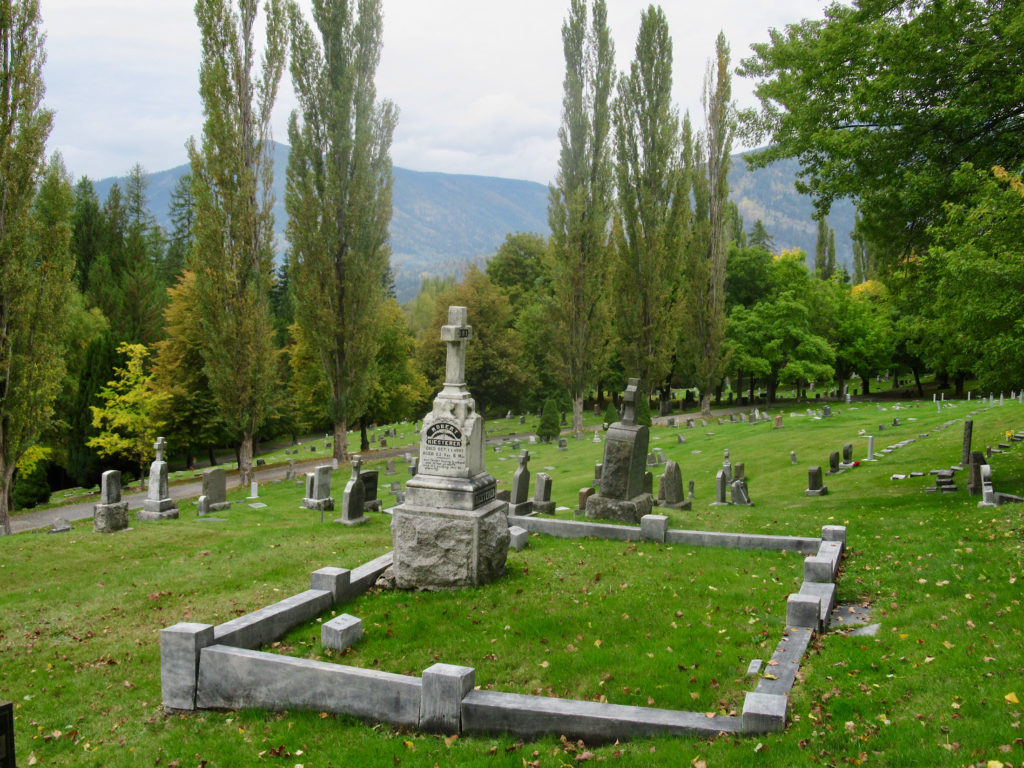
Continuing along Latimer Street, turn left and head downhill on Josephine Street two blocks to Carbonate Street. Turn right and walk uphill to the intersection of Carbonate and Hall Streets.
Stop #14 Houston’s Landing Pad
Catch your breath as you peer at what once was the Houston family home (702 Carbonate Street). It was constructed on this corner lot for Mayor John Houston in 1898. The original design was High Victorian architecture. While still beautiful, much of the original character has been lost over years of renovations. As a result, this home’s visual story is muted. Uncharacteristic for Houston!
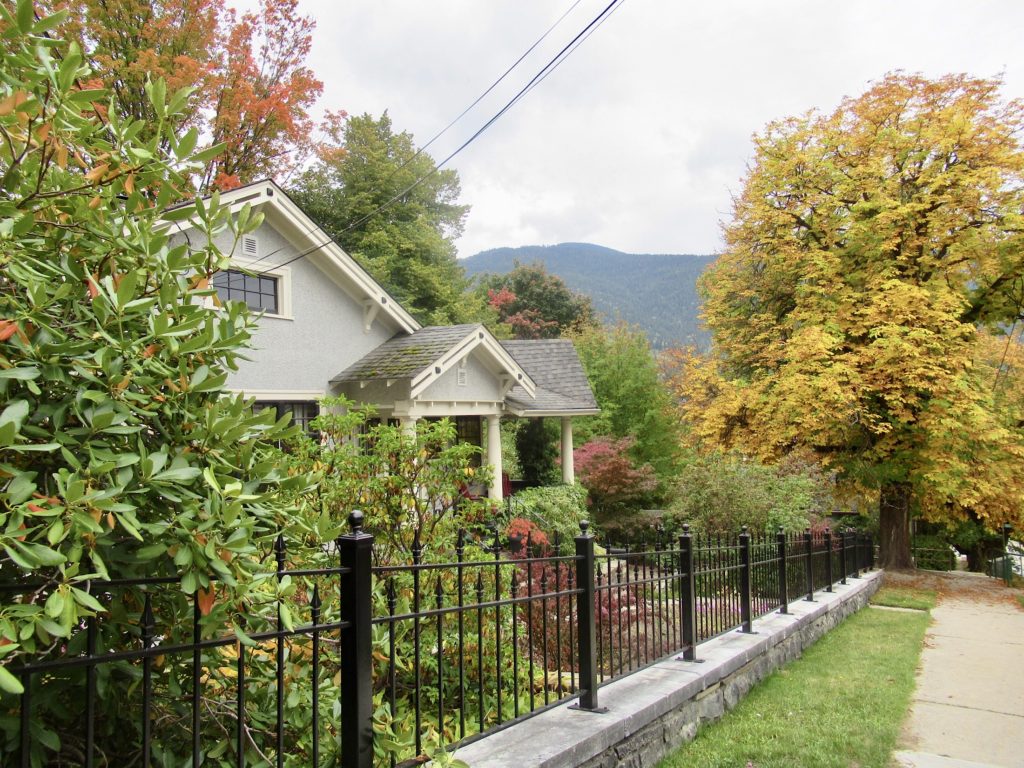
Continue uphill to end of the block and the corner of Carbonate and Hendryx.
Stop #15 – Hochelaga and the end of our historic walking tour
Here’s a beauty whose story is getting a facelift while keeping a strong feel for the past. The house at 810 Hendryx and Carbonate Streets was built for Arthur H. Buchanan in 1899. Mr. Buchanan is renowned for snowshoeing 50 miles (80 km) from Northport, WA to Nelson, BC to establish the Bank of Montreal. He had the grand sum of $11.50 in capital. The bank took over the home in 1900 and named it Hochelaga after the Iroquoian name for Montreal. Successive bank managers lived in the house until 1964.
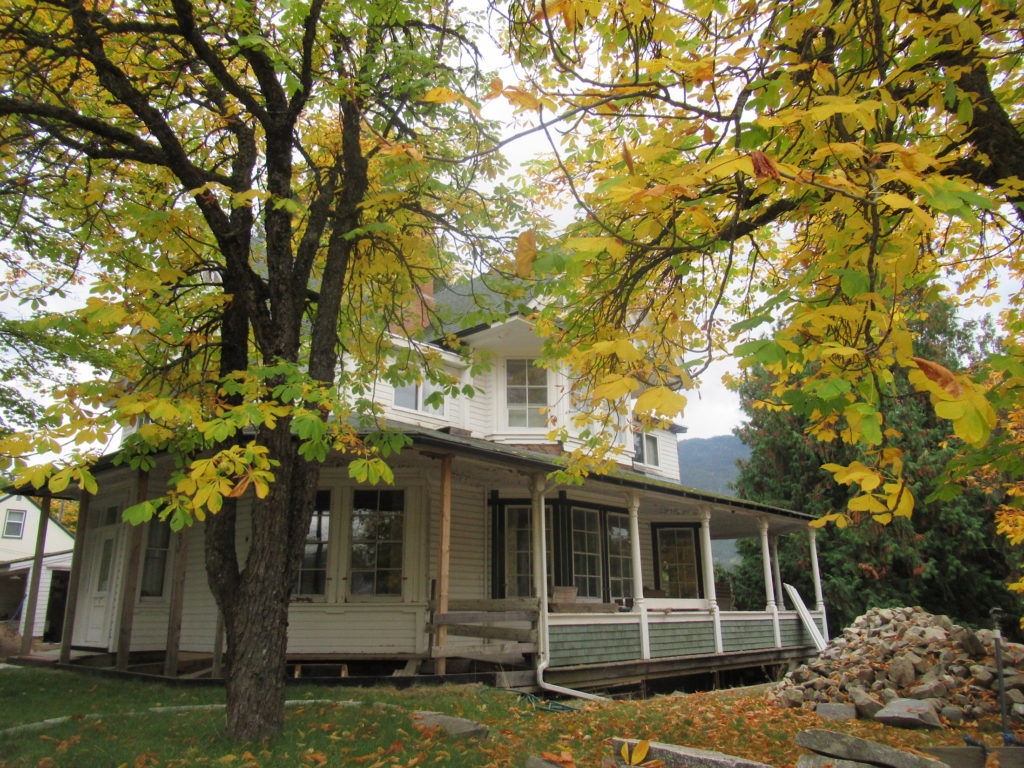
From here, head down Hendryx – note the paved street disappears although the staired parkway continues the name – to Vernon Street and return to the tour’s starting point at the Nelson City Campground.
So Many Stories, So Little Time!
Without a doubt, we barely scratched the surface of Nelson’s heritage structure and their stories. One reader already noted in the backstory post that we didn’t mention Joseph Patenaude, “the most nationally significant Nelson resident.” It was an oversight and one we have to rectify. Watch this excellent video for the story of this amazing man – along with some fantastic historic photos of Nelson in its early years.
There are many more stories to be told. As a result, I’m thinking there may have to be a second part to this tour in the future. In the meantime, we hope you enjoy this initial peek into Nelson’s past as much as we enjoyed pulling it together for you. Let us know how your tour goes!
P.S. If you’d like a virtual tour, bring up Google maps for Nelson and place the “yellow man” on the street outside of Nelson’s campground and “walk” along the streets following our tour directions.
Final Date with a Cemetery
We didn’t walk all the way up to the cemetery on our tour, but you can if you want! The shortest route is close to 3 ½ kilometres – mostly uphill – from the campground to the entrance of Nelson Memorial Park at the top of Falls Street.
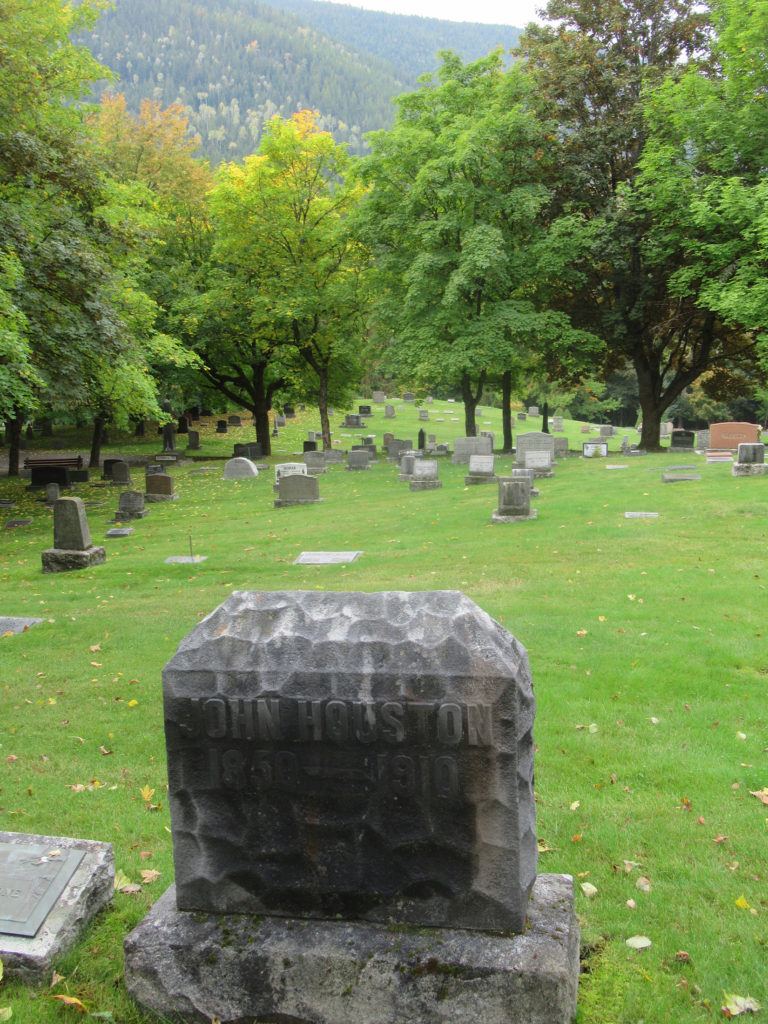
What I suggest is to drive to the entrance, park and walk among the towering maples and other mature trees, using the Tour of Nelson’s Cemetery as a guide. We wandered for over ½ an hour seeking out select graves and soaking up the timeless peace in this final place of rest.
When You Go
- Reserve your site ahead of time at the Nelson City Campground – it’s a small campground and the best sites are booked well in advance. Note: The campground is open from May to October.
- Pack good walking shoes!
- You can find more information about the region from the Nelson Kootenay Lake Tourism site.
- A Backroads Mapbook will also help in your exploration of the area.
Love historic walking tours? Check out these posts!
- A Journey Close to Home: Walking Glenbow Ranch
- Painted Desert Inn: A History Tour | Arizona
- Self-guided Walking Tour of St. John’s
- Exploring Historic Cemeteries
- Exploring the McLean Mill National Historic Site
- Historic Tea House Hikes in Banff National Park
I was born and raised in Nelson but unaware of much of the history until I read your “walking tour guide of Nelson”.
Well done!!
I don’t believe it for a minute, but thanks for the kind words Pat!
The street names in Nelson do you have any knowledge to who they were named for?
I haven’t done any specific research on street names in Nelson, but that would be a great question for the Touchstones Museum and Archives staff in Nelson, https://touchstonesnelson.ca/
Lo e to connect. Are you in the Nelson area?
Ray Stothers
Nelson Storytelling Guild
In the area again next summer some time, will see if it works to connect then. Love to hear your take on Nelson’s history! Cheers, M.